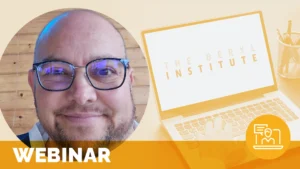A Change is Gonna Come… Creating the Foundation for Improving the Patient Experience

On the Road with Medical Center Arlington – May 2011
by Jason A. Wolf
After an insightful visit to the health system in British Columbia, Canada and a hiatus for The Patient Experience Conference, we return with the story of a facility that represents a question posed and a situation faced by most healthcare organizations looking to address the patient experience. The reality of the patient experience is that large systemic efforts as well as extensively supported or staffed programs are unique, with less than 1 in 4 actually having a Patient Experience/Service Excellence related leader (The Beryl Institute, 2011). The average facility attempting to address this issue is working daily to justify the case for why this is important, straining to align the right resources and simply asking themselves “where do we start?”
I had the privilege of visiting the Medical Center Arlington – a 332-bed facility with 1300 employees in Arlington, TX – to learn how they answered that very question. The team at Arlington set out on a journey over the last two years to lay the foundation for reigniting the focus on experience and have followed a thoughtful and planned process of improvement. Our host, Juan Luna, Manager of Guest Services, who has been at Arlington for just over 9 months, helped frame a clear and powerful picture of what an organization needs to consider in getting a patient experience effort underway. The stories also reinforced the notion and the findings from the Institute’s Patient Experience Benchmarking Study (2011) that, in working to improve the patient experience, support from leadership is critical to success and that starting simply, with the issues you can influence, helps you gain momentum for bigger wins. The story I share represents the first chapters of a transformational journey, but one in which significant momentum has been created and gains already made.
Crawling Before You Walk – Transparency and Learning
Linda Paluga, Vice President of Nursing, first arrived at Arlington, just two years ago. The facility’s patient satisfaction and HCAHPS scores were low and the facility was trying what they could to move the experience needle. Linda realized she needed to start by revealing the current reality the facility was facing. “There was some general cultural resistance when we first started talking about this issue,” she said, adding “and a sense of ‘been there, done that’.”
She started with focusing on simple weekly messages on the facility’s Hospital Consumer Assessment of Healthcare Providers and Systems (HCAHPS) and patient satisfaction performance. The discovery was that most of the staff members were not fully aware of the scores, so there was not a sense of the challenges they faced or opportunities they had. By beginning to share the data in small, understandable chunks awareness spread across the organization, at first slowly, but then with increasing momentum. The reality for the team was not that they were incapable of better performance, but that many were unaware of where they stood.
Linda emphasized, “Transparency became an important first step in our journey. We needed to share our scores and educate our staff on what the scores meant so they recognized the importance of the issue. People will react when they know what is out there.” So the lesson here is that a key first step is simply sharing and educating. This was not a requirement for specific action (yet) or a training program to teach people how to behave differently. Rather it was helping people recognize the challenges they faced collectively and beginning a discussion on what changes were needed to make improvements.
Juan said, “Sunshine is the best disinfectant.” This insightful statement summarized Arlington’s efforts to align everyone around the opportunities they had as an organization. But the reality is awareness alone is not the complete recipe for success. It comes down to the people who deliver on experience every day.
Creating Alignment – Leadership and Right People
In some ways we have become numb to the idea of leadership influence and the concept of having the right people on board due to the mere frequency with which these ideas are raised. More interesting is that with this frequency, in stating and understanding these key factors, organizations often choose not to act. Realigning leadership and ensuring the right team are not easy things to do, but they are simple, clear and understandable actions that can lead to effective change and positive outcomes. Linda reinforced this idea by suggesting, “It’s risky, but you have to take that risk to achieve you want.”
In the last two years the upper levels of leadership at Arlington have seen some significant changes. The entire C-Suite is new due to promotions and other career moves, which left Arlington with a new and eager executive leadership team. New does not mean they lacked experience, but this new team of individuals recognized they had an opportunity ahead. The shift in leadership did not stop there. The organization took on some intentional change efforts to ensure the right staff was in place at all levels.
The organization structure was shifted to ensure that leadership was closer to the floor. This allowed for greater support for staff members and the effective delivery of key messages about improvement efforts. This action reduced the number of overall directors, while providing more opportunities for unit supervisors and additional front line leaders to ensure the best and most effective delivery of care. This change was not simply moving pieces in the puzzle, but in some units, leaders were required to reapply for these new leadership roles.
Linda suggested that with the expansion of a nurse’s role from simply being a strong clinician, to being a solid nurse, an effective communicator and a strong leader, the facility also needed to take a critical look at who led at all levels. Staff and physicians participated in interview processes for leadership roles, key behavioral expectations were defined and these expectations were reinforced from the very beginning in New Employee Orientation. It was in this orientation that new staff are introduced to a common definition for patient experience to level-set everyone’s understanding – the sum of all interactions, shaped by an organization’s culture, that influences patient perceptions across the continuum of care (The Beryl Institute, 2010). Sandi McDermott, Vice President of Nursing and team lead for the pain management process improvement effort, suggested that it was the ability to identify and reinforce the expectations that was a cornerstone of the overall patient experience effort’s success.
Sandi also suggested that is was the ability to engage others in the process and create a shared sense of ownership and accountability that begin to nudge the effort forward. When I asked her for the potential keys to success, she was emphatic in sharing, “We focused on consistency, communication and accountability.” This was obvious in the Medical Center of Arlington’s Positive Patient Experience Team effort (PPET) and the Process Improvement teams design to begin to drive better outcomes.
Determining Critical Areas of Focus – Process Improvement with Purpose
The implementation of the Positive Patient Experience Team effort (PPET) and the Process Improvement (PI) teams was a critical next step in supporting increased messaging and aligned leadership. Determining clear areas of focus allowed the organization to have an unwavering sense of its core experience objectives and afforded the opportunity for individuals to take ownership at all levels for generating positive outcomes. This process represented the recognition that while strong leadership support could exist, the accountability needed to permeate all levels and corners of the organization to ensure success.
The PPET team is supported by a Steering Committee of key leaders that helps to frame the overall program focus and purpose, but the “real work” as Juan described happens at the PPET and the individual process improvement team levels. An interesting observation here is that to begin to create a broader organizational shift these teams were not charged with unit level efforts, but rather took macro level views at the challenges facing Arlington. The PPET itself is comprised of over 50 members of the staff from all levels. The group comes together quarterly, but is supported by the regular work and output of three designated PI teams on which these individuals sit. The teams are focused on pain management, communication from nurses and cleanliness respectively.
The three teams engaged the employees of Arlington in identifying the issues needing to be addressed, but also in their very positioning reinforced that it was simple steps that would begin to build a foundation for lasting success. Not only did these teams work independently, but they were also brought together cross-functionally to share their ideas and identify key actions. The result was three major efforts that have allowed for tangible, measurable progress and a means to begin to engage greater and greater amounts of the staff. These outputs included:
- Re-visioning communication boards
- Establishing interdisciplinary rounding logs
- Producing in-room informational tent cards
The beauty of these efforts is not in their novelty or unique nature, as I am certain these have been items that you may have very well tried in your facility; it lies in the way in which these ideas were generated and the processes put in place to support them. It is also embedded in the very use of the tools in supporting all three of the PI efforts. This has led to a systemic focus and effort that has broader implications and opportunities for the entire facility.
The communication boards have been (and still are being) phased in throughout the facility. They provide a clear template for how all staff will communicate with patients and families. They also are monitored on the numerous layers of leadership rounding now in place (see below) and have become a focal point for consistent and reinforcing communication. The communications teams also recognized the need to specialize these boards for some of the departments with unique needs as exemplified in the picture of a board for the Emergency Department design to address anticipated time spent in the ED.
The story of the communication boards is not simply one of mounting nice white boards on the wall. Rather it exemplifies the thoughtfulness of the PPET and PI process at Arlington. Christi Nguyen, currently the Director of Risk Management for the medical center explained how the communication boards were not pulled from a standard catalogue. The team gathered the input from staff across departments in the hospital as well as patient focus groups to know what was important to them. Prior to deployment of these new tools, the team observed the current usage of existing white boards and provided training on usage and expectations before the new boards were mounted. Audits were done on the use of existing boards to ensure consistency before the new boards ever arrived. This intentional effort and building of a new practice was supported by an infrastructure of accountability.
The interdisciplinary rounding logs serve as a means for all staff that enter and leave a patient room to acknowledge and identify their interactions. These forms include information touching nursing, environmental services and food service and are required to be posted near the door of each room so they are easy to locate (and as Christi added, easy to audit). As Juan and I toured a few of the units we were able to see these forms in use. They were powerful communication tools and also a means to ensure key elements of the experience were being considered in every visit by any staff member to a room. The challenges that remain are consistent use and placement of the form, but are part of the ongoing reinforcement included in the rounding process and process improvement discussions.
The tent cards are a newer addition designed to communicate and level set expectations of the patients and families in their room. They also serve as a reminder of the expectations of staff in engaging with the guests at the facility. The power of these simple communication tools is that it reminds all parties engaged in the “experience dialogue” to be aware of the key areas of focus and individual expectations. These cards are still in the process of being rolled out in the facility.
The realization of these solutions is that, as I mentioned above, they are not unique in concept or use. What does have this effort stand out is that these tools were not simply tactics stuck out in the hospital as things they thought they should do. Rather through the implementation process the PI teams purposefully engaged the voices of staff and patients to ensure these tools fit the specific needs for Arlington. These concepts were not implemented as “must haves”; they were implemented as resources that made the most sense and provided the biggest opportunity for impact. They each have their own unique flavor and all exemplify the increased awareness that initial steps towards transparency sought to foster.
It is also important to recognize the overall work of the PPET members themselves. As Juan Luna stressed, “It is the members themselves of the PI Teams, that are driving much of the change here at Medical Center Arlington.” Team members are actively engaged in efforts such as On-The-Spot recognition where members of the Cleanliness team recognize positive actionsor by being a part of the New Employee Orientation presentation (PI Team members are invited to share what it was like to be part of the teams and they engage in staff-to-staff discussion about patient experience being everyone’s accountability).Juan added, “We need to recognize that along with the leadership, it is important to have fire starters throughout the organization to build excitement and awareness around this. The members of our PPET do just that for us.”
This statement exemplifies how moving the needle for Arlington came down to a structure of engagement and accountability. From the engagement of staff in the work of the PPET, additional features for ensuring accountability were also implemented. These efforts included consistent executive rounding, director rounding and role modeling from leadership at all levels and ultimately led to a reinforcement of the expectations for all members of the Medical Center Arlington community.
Setting Expectations of Performance – Rounding and Walking the Talk
An important part of the Arlington story has been their ability to take simple concepts and effectively move them to action. While these tools and processes may be in place at many healthcare facilities, the unique and inclusive design process, the shared accountability and ownership that was created and then ultimately the engagement of leadership in reinforcing both action and outcomes have been the “perfect storm” of efforts to support success. Executive rounding was the starting place for this effort.
Executive rounding at Arlington, while not unlike rounding we see elsewhere, had an interesting twist – a rigorous and public accountability structure. Executive leaders complete and submit rounding logs and the progress of these round is reported weekly. The executive leadership team not only reviews the scores, but they actually see everyone else’s rounding progress. The power of this was palpable for Linda as she shared an interesting story. When reporting on one week’s score to the executive team, a significant number of questions arose as to why the scores were dipping. Questions of how this could be happening, where were we missing our efforts and other inquiries were posed. Linda then switched to the slide showing the tracking of rounding that week…the discovery being that the team had fallen off that week in their rounding efforts and the scores reflected this loud and clear.
“This was an ah-ha moment for all of us as leaders,” Linda stated. “If we can’t do this, how do we expect our directors or staff to do it consistently”. The team recognized that it was in their willingness to hold themselves accountable for this important effort that they not only had a great impact on scores, but they modeled the behavior expected across the organization.
The public display of rounding logs is a powerful commitment that is part of the growing director level rounding efforts being implemented as well. Transparency at Arlington is not simply about scores, but about a shared commitment to doing the simple and fundamental things well in order to ensure the best experience possible for patients. This is when what could be seen as the ordinary, can, and has in Arlington started to become the extraordinary.
Another addition to the leadership effort put in place pulls all of these initial efforts together. The leadership team now comes “ready to work” the last Friday of every month. Ready to work means they dress appropriately for the unit they will be supporting that day, from assisting nurses in the ICU to the CEO himself serving as a transporter in the Emergency Department. The leadership team works with staff in their roles, gets a sense of the day-to-day work, and engages directly in the most effective way of understanding the patient experience, by being at their side.
These leadership efforts provide an opportunity for leadership to walk the talk and show their commitment of the expectation that Medical Center Arlington be a place that provides unparalleled care and unwavering service to patients, their families and the growing region they serve. The efforts in combination with the initial steps outlined above do not represent taking on major culture change or driving an extensive patient experience effort by title. They have identified the fundamental pieces that needed to be put in place first to ensure a foundation for a greater patient experience and on which future plans can be built.
Laying the Groundwork for the Future
The power of the Medical Center Arlington effort may be the very simplicity mentioned at the outset. It also includes the rigorous commitment this new team has taken on to ensure a great place for care, a great experience for patients and a great place to work for staff at all levels. Arlington represents the many facilities asking themselves where to start and while their exact path may not be the one every facility need follow, the process represents an opportunity for serious consideration.
The efforts at Medical Center Arlington exemplify how focused action can lead to positive outcomes. In the short period of time since starting these efforts, Arlington is already seeing results. Their “top-box” (percent ‘always’) scores around their major efforts have all seen improvements from the end of 3rd Quarter of 2010 to today, almost 9 months later. Communication has increased from 75% to 79%; pain management has moved from 74% to 78%; and cleanliness has jumped from 66% to 78%.
So what foundations can your facility (or is your facility willing to) put in place on which to build your patient experience efforts? The tactics may be different, but the fundamentals should not be. It is about aligning leadership and people, establishing clear expectations and living to them at all levels. It is about transparency and ownership, consistent communication and accountability. With that, what was exemplified in this visit is that while simple in concept, it is not always easy. As in building new muscles there is pain and at times it is easier to stop than push through. Our patients deserve only the later…that we push through. Medical Center Arlington, while still early in their journey, is showing a great commitment to do just that.
As we wrapped up the day in Juan Luna’s office I looked up at his white board laying out their patient experience plan and saw the words “A Change is Gonna Come”, the title of the song by Sam Cooke. This was powerful as it represents a common theme that is continuing to emerge from my visits. Improving patient experience is not necessarily about large change efforts, but instead is about unearthing the passion that brings people to this work. When we do the things we know are right we can be assured that change is gonna come.
As Sam Cooke so eloquently wrote:
There been times that I thought I couldn’t last for long
But now I think I’m able to carry on
It’s been a long, a long time coming
But I know a change gonna come…
Change is definitely happening at Medical Center Arlington.
My greatest of thanks to the team at Medical Center Arlington for both their time and hospitality. I appreciate their willingness to share the early stages of their process and I hope this will inspire others to tell their “getting started” stories. It is through this sharing that we will make our efforts stronger and easier and continue to improve the patient experience together.
Related content
-
 Infrastructure & Governance
Infrastructure & GovernanceConnection Call: Aligning Volunteer Services and Patient Experience for Maximum Impact
12pm ET / 11am CT / 10am MT / 9am PT – We all know that the work that volunteers do in our organizations directly impacts patient experience, but that connection isn’t always clear to your patient experience department. So how do you create and amplify that partnership? Join us as we learn from our
Learn more -
 Culture & Leadership
Culture & LeadershipWhy Human Experience Matters
As we close the 11th volume of Patient Experience Journal and a pivotal year for experience efforts globally, it provides a moment of pause, of reflection, and an opportunity to return to purpose. As a publication accessed in over 220 countries and territories around the world, I am heartened by the fact that what is shared on these
Learn more -
 Culture & Leadership | Quality & Clinical Excellence
Culture & Leadership | Quality & Clinical ExcellenceEmpowering Healthcare: Understanding and Supporting Trans and Non-Binary Patients
Join Lou Weaver for a webinar on understanding trans and non-binary individuals and their healthcare needs. The session will cover specialized healthcare considerations, Standards of Care, and the impact of Social Determinants of Health on this population. Participants will explore the differences between sexual orientation (SO) and gender identity (GI), the importance of related data,
Learn more
